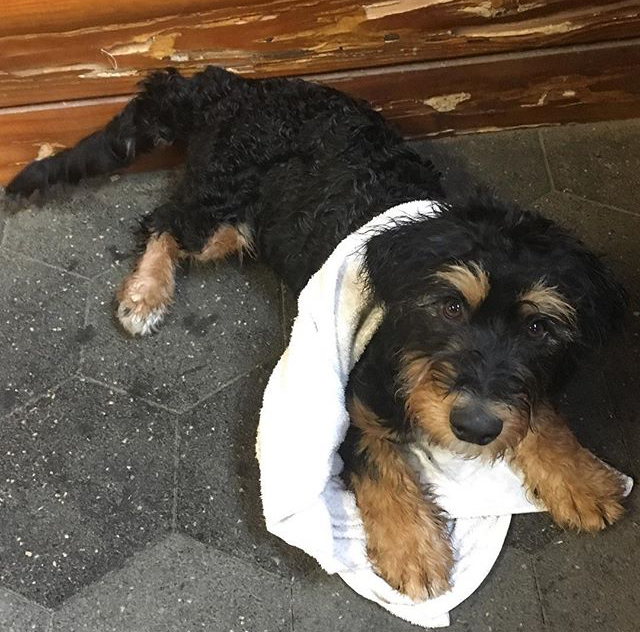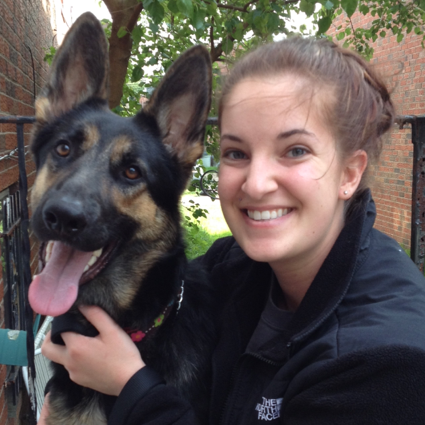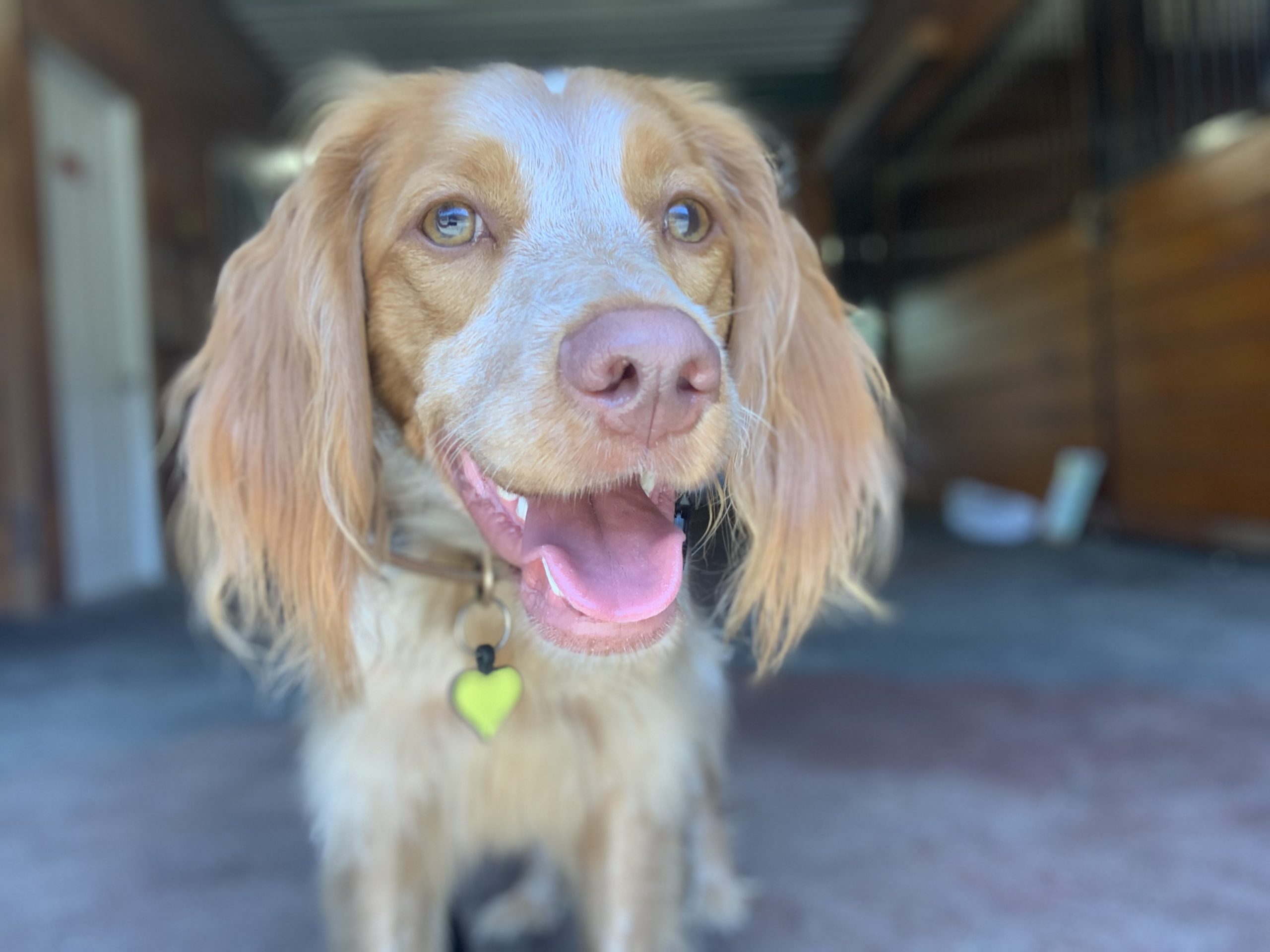We focus on dog training here.
(Yes, yes, if your thought was “duh” — I get you.)
But what IS dog training? Really?
For me, and likely many of us, it is opening the line of communication between two different species living together.
This makes life easier for both the humans and the dogs.
Humans can experience relief when the dog learns that pooping in the living room is not ideal and that following household routines can be fun.
Dogs can experience a more predictable, stress-free environment as they understand our expectations.
However, training is just one part in the overall picture of behavioral health. We use the broad term of enrichment to cover different areas of how to provide the best environment for our animals, but we’ve found the definition of “any artificial or natural item that stimulates a pet mentally, physically, or socially” (cited) to be the most helpful. Providing the right enrichment for your dog can lead to better behavior all around.
Training is part of enrichment, as it is an interactive experience that allows for thinking and problem solving. In addition to training, giving your dog other enrichment opportunities will keep you and your canine companion happy all year round.
We’ve got a few suggestions of different enrichment activities to get you started:
- Food Enrichment – Challenge your pooch to think outside the bowl! Providing food puzzles keeps the brain working as well as encouraging natural hunting or foraging behaviors. Examples of food puzzles:
- Water bottle. Pour the kibble in an empty water bottle, and your dog will have to flip the bottle around to get the food out of one tiny hole.
- Box. Hide the food in a box and see if your pup can learn to unpack the food or flip the box over.
- Snuffle mat. You can purchase one, or make your own from a high pile bath mat. Pour the kibble on and let your dog forage for each piece.
- Commercial slow feeders. Many companies make different food puzzles or slow feeding bowls for you to purchase.

2. Environmental Enrichment – Give your dog a new experience by changing their environment! Examples of environmental changes:
- Sightseeing. Provide a perch or any new area for your dog to view your home, or outside space from a new vantage point.
- Splashing. Let your dog explore a baby pool, lake, or river at their own pace. See how they interact with the water.
- Digging. Provide an appropriate place for your dog to dig, and let them have at it! A large empty flower pot can work wonders.

3. Sensory Enrichment – Provide your dog with new things to see, hear, touch, and smell. Examples of sensory enrichment:
- Bubbles
- Ice cubes
- New smells (try some essential oils or extracts on their bed or soft toys)

4. Social Enrichment – Whether with other people, animals, or just exploring with you (their favorite human!) you can provide new social experiences for your pal.
- Pet store. Take your pup on a trip to the pet store the next time you need more dog food, treats, or a new toy. Letting your dog pick his new stuffed animal can be a treat itself.
- Playdates. Find some doggy friends through our classes, at a yappy hour, while on a walk, etc. Schedule time to get together and play!
- Hike. We have some wonderful parks and wildlife refuges in the Philadelphia area and in South Jersey. Bring your pup for some social, environmental, and sensory enrichment.

Enrichment should add value to your pet’s life. If your dog is scared or uncomfortable by any of the enrichment you try, stop immediately and try something else. By exploring different enrichment opportunities, you will find out your dog’s favorite things to do – and that can give you some new reinforcers to use in your training!
—
We recommend Beyond Squeaky Toys if you’d like some more ideas and great information about enrichment. (Not an affiliate link. We don’t make any money if you click over. It’s just a book we love!)


